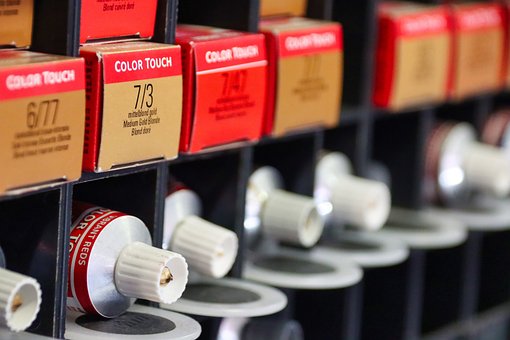Adding some life to your hair with dye is a step many people take. However, most know patch tests are a crucial stage of the hair colouring process. Those who fail to complete them put themselves (if colouring hair at home) or their clients at risk. Without a patch test, it can lead to scalp blisters and hair damage if the recipient has a skin sensitivity or allergy to the dye.
Here’s everything you need to know about the importance of regularly patch testing your skin.
WHY SOME HAIR DYES CAUSE SKIN REACTIONS
Unfortunately, while many improvements have been made to modern products, reactions to hair dyes still occur. Most people won’t suffer a problem, but as the consequences can be severe, allergy testing is a precaution that isn’t worth skipping.
Colouring hair requires a process triggered by certain chemicals, usually PPD (p-Phenylenediamine) or Toluene-2,5-Diamine Sulphate. While many manufacturers formulate dyes that are much kinder to skin and hair now, chemicals are still required for a successful colouring process, especially if you want a permanent or semi-permanent shade.
Hair dye reactions can show themselves in a variety of ways. The response experienced ranges from mild sensitivities, such as contact dermatitis, to anaphylactic shock, requiring an emergency medical response.
THE IMPORTANCE OF REGULAR PATCH TESTS
Many clients who end up suing hairdressers do so because certain preventative measures and safety checks weren’t carried out. One of the simplest ways to test for hair dye allergies and skin reactions is a patch test. This should be completed at least 48 hours before having a treatment to give sensitivities time to show themselves. If there’s any sign of a reaction, you shouldn’t colour your hair using that product.
The NHBF (National Hair & Beauty Federation) in the UK stresses that allergies can develop at any stage of life, even if you’ve used the same product before without issue. That’s why regular patch testing is advised every six months. It’s also best practice to ask clients whether they have any existing skin rashes or scalp concerns, their history of hair dye reactions and if they’ve had temporary ‘black henna’ tattoos in the past. Using henna can even activate sensitivities to some of the ingredients in hair dye products.
Common patch test reactions include red marks, itching, swelling or burning sensations where a small amount of dye was applied to the skin (often behind the ear). If any of these appear, you should avoid hair dye.
HOW TO SUE A HAIRDRESSER
Claims against hairdressers often arise from hair dye reactions when proper precautions weren’t in place or allergy test guidance wasn’t followed. If you’ve suffered scalp damage or a hair disaster after visiting a salon, you may be entitled to financial compensation.
Would you like specialist advice from a Hairdressing Claims expert? Contact our team today. You can reach us on 0800 141 3682 (freephone) or 0333 202 6560 (from mobiles). Alternatively, send a message to enquiries@hairdressingclaims.co.uk, and we’ll get back to you as soon as possible.

